
..........................................................................................................................................................................................................
the art of expression
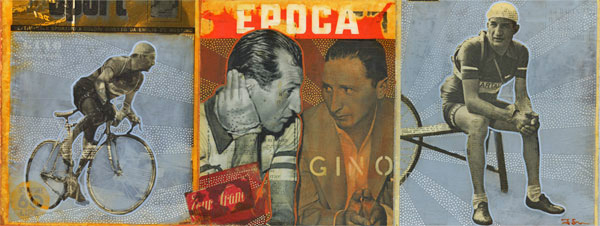
as if you needed me to tell you this, the bicycle is a truly wonderful machine, being at once both an end in itself as well as a means to an end. for many, it is not only a vehicle of delights, transporting its engine to and from interesting and perhaps less interesting locations, but allowing an almost unfettered level of expression by that very same engine. it is this that often encourages its acolytes to collect more than one of its kind in the bike shed, for surely expression can be counted upon to alter itself on a weekly, if not daily basis? while this does not necessarily disfavour those possessed of only one, it certainly humours those possessed of a flock.
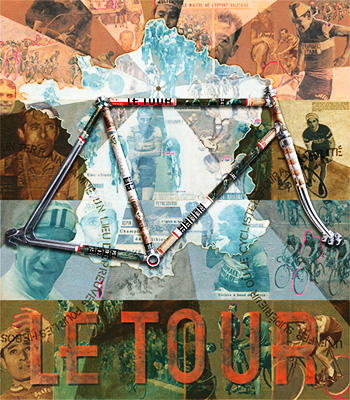
for the majority, one, two or several examples are plenty. these may favour only one or several gears; they may offer a splash of colour; they may appear more straight-laced for the more formal occasion, but in truth, many an owner is satisfied with his/her lot, using the exertions of pedalling as an appropriate means of expression. there are, however, a minority for whom the bicycle has more than one end to its means, individuals who have possibly a greater sense of perspective than the majority, and are able to place the cycle and its heritage just where we didn't realise it belonged.
one such person, currently enjoying nods of approval and the approbation of his peers, is iconic artist, james straffon. having viewed his current exhibition at the snap gallery in london's piccaddilly arcade, it seemed only right and proper that i make further enquiries of the gentleman to better edify us all as to what brought him to his current position of prominence.
there are two possible routes to artistic excellence: that of the prescribed educational direction, or that of self-made troubadour. did james revel in the formally trained approach? "If formally trained means attending the likes of Slade School of Art for three years, and immersing myself in experimental practice and theory, the answer is no. I am however, art-qualified, with a degree in Graphic Design, and a great deal of experience working within the arts. My route to fine artist has been somewhat more self-initiated, which perhaps sums up my approach to life."
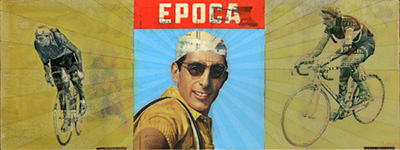
personally, on leaving art college, i dabbled, but mostly inhabited the wilderness on which the life of an artist occasionally appeared on the horizon or inhabited the periphery. it was a goodly number of years before i succumbed to the thought that i might be guilty of ignoring an inherent talent and decided to take the artistic life a tad more seriously. was there a previous life to james straffon?
"Although the last couple of years have seen a creative focus on the cycling oeuvre, I don't really think of myself as a cycling artist. Indeed, if it were not for the LOCOG brand clampdown, the public would have seen a new body of work based on Olympic Games heritage. That said, I have always been a creator - covering many forms of creativity - I've made films, written a novel, but perhaps none finished to the degree of my present work."
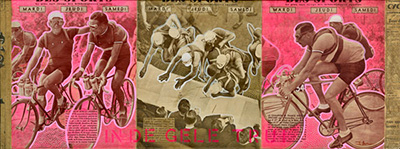
the last remnants of my own artworks from well over a dozen and a half years ago still cover the damp patches on the wall, saving mrs twmp and i from having to choose a wallpaper with a more visible pattern. due to the thematic nature of their subject matter, many has been the comment that they appear to be differing threads of the same story. james straffon's works currently on exhibition seem intent on doing likewise; telling a story. is that something he wrestles with; is that the true purpose of his work.
"I'm not really one for wrestling. I see my show as multi-layered, as all good art should be. The 'purpose' is that which the viewer finds themselves. So on one level the visual can be explored for form, effect, emotional resonance alone. Beneath there is an overall allegory - the story of the Tour de France; each artwork telling its own chapter, or verse. My intent was to fashion a body of work which spoke of what I call 'devotional imagery'. To that effect, I see the upstairs room of my show as a perfect example of this. The altar, located on the far wall, is the large LE TOUR artwork. It is the very fulcrum from which all the other artworks radiate. And running down the flanks of the side walls are the stained glass windows (the Portraits series). These show the saints or icons, each pane reflecting a narrative or folklore. So if there is a purpose, it is to rework the exploits of the riders in a bike race, into a form of apotheosis."

i am not the only individual who considers the bicycle as a means of expression. though i hadn't considered it so for many a long year, it has subtly crept upon me that riding around a small hebridean island dressed in the finest clothing the cycle world has to offer is as much a form of expression as the visiting enthusiasts who come decorated in all manner of whisky themed clothing. though i hope it stops short of ostentation, it is an almost hidden way of expressing personality, letting others know just where one's loyalties lie.
the expressionists as defined by the art world, are just as concerned with nailing their colours to the flag pole, intent on describing by artistic means, just how much their subject matter influences them in the moment. for reasons of identity or ego, many of these expressionists channel such exuberance through rapid application of paint or whatever medium serves their purposes, leading to often rapidly completed works. expressionism would, therefore, be regarded as more immediate than the meticulous art practiced by straffon, yet expressionism seems the only appropriate description that fits the bill. does he find that to be the case, as opposed to 'mere' illustration?
"An interesting thought. I would struggle to align what I do with the likes of Paul Klee, Marc Chagall, Egon Schiele or Max Beckmann. Expressionism, for me, sacrifices reality for more emotional, subjective effect. My artwork very much deals with real life, albeit a sporting one. Therefore, I have always considered my practice more akin to Pop Art, and the likes of Peter Blake, Robert Rauschenberg, even Andy Warhol."
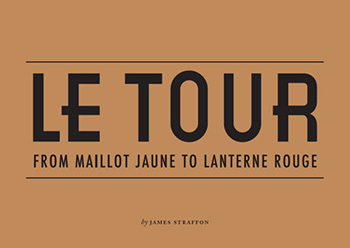
many of the great masters of the art world produced their masterpieces through a series of studies ranging from tiny pencil sketches to virtually scaled-down works impressed either in gouache, watercolour ore even libeerally applied oils. some of these could take many a year to be realised, suffering from constant revision and a honing of the necessary skills. this is, of course, not the only method of creating art; many throw themselves headlong into the final canvas from the outset, almost endlessly reworking and scraping the paint until it is either moulded into the final image, or beaten into submission by strength of artistic will.
james straffon's works are less influenced by this work pattern, yet the depth visible in each final image on display suggests a less than immediate approach. does he undertake considerable research before he commits to each series of work? "Very much so. And particularly with the LE TOUR exhibition. I wanted to cover as many aspects of the race itself; in the process revealing some of the subtext. To that end, I feel I have only scratched the surface. So although the show is now up and on the gallery wall, my research is still ongoing. I find it an integral part of the creative process."
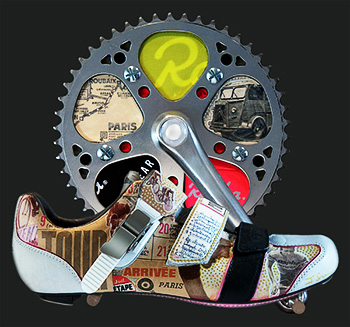
cliche in artistic expression is not entirely unknown, and nor is the same unheard of in words ascribed to a particular subject. i am not overly fond of inserting cliche into my own written work, but it seems appropriate in this current thread to state the obvious that you cannot make an omelette without breaking some eggs. on the right, just inside the door of the snap gallery sits a single rapha grand tour shoe clipped into a pedal attached to a crank. the shoe has been treated with decoupage in a similar manner to several of straffon's accompanying works. applying decor to the yak leather reputedly required a sanding of the surface to allow it to adhere to the surface.
considering the newness of the footwear and its considerable cost, did it feel almost sacreligious to 'defile' the grand tour shoes in order to incorporate them as artworks? "There is a key component of my modus operandi, one which keeps my making charged and exhilarating, and that is risk. I have deliberately always worked with original items. So, for example, VOILA will feature a rare magazine cover from July 1934. Onto this I will add paint, pen, and lastly resin. Once I commit to the process, there is no going back. In this way, I have embraced the spontaneity of chance. And allowed myself to look beyond the apparent 'value' of the original items I repurpose into artworks, adding a new 'value' with the end result. Perhaps this 'destruction' is a form of desecration. But it's a sacrifice I'm willing to make, in order to arrive at a pseudo-resurrection; artist alchemy, if you will."
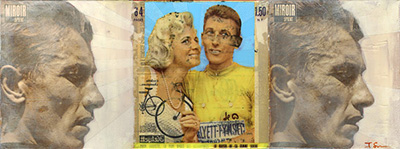
i mentioned during my description of visiting the current exhibition that i had a less than concrete appreciation of the art i was about to embrace. though it had not previously occurred to me, the experience was not unrelated to a few hours previously, admiring the religious iconography exhibited in london's national gallery. how does james react to the contention that the triptyches in the 'le tour' exhibition form the basis of a modern iconography? "For me there is no contention. That is what they are."
though james has bowed to modernity and the history made by bradley wiggins and his sky team in this year's tour de france with the limited edition print shown on this page, the majority of his works feature the true greats of cycling; coppi, bartali, anquetil, simpson et al. does he generally find himself more in touch with the riders of cycling's great heritage than with that of the contemporary world, or is it more that their physical legacy has left material more adaptable to his idiom?
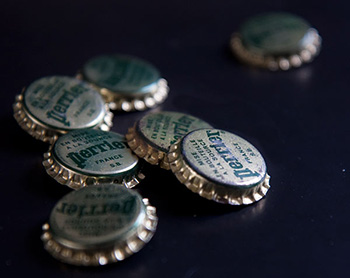
"It is true that 'modern' memorabilia is less appealing to me. Ironically the improvement of print media - glossier paper, more vibrant inks, etc - is harder to work with. In addition, the infection of commercialism has rendered so much material unusable - where once a cyclist could be seen pictured on a magazine cover, heroic and well framed; succinct headline telling the story, now he (or she) will be swamped with additional subtitling, previews to other stories, branded supplementation. There is a quality issue. And within that, the base material. Which is why, I'd like to think, art schools will always encourage the craft of pencil, charcoal and paper. And not stylus, finger and iPad. Maybe I prefer to look back, than forward."
up till recently, i had only viewed straffon's art by way of occasionally printed matter, but more often several facets of the interweb. and in an embarrassing reprise of my attitude to photography when at art college, i found it wanting. while weeks of tuition in painting class taught us the basics of brush manipulation, mixing of colours, stretching and priming of canvas and the many other aspects of being an accomplished painter, one or two of those engaged in post-diploma work were making strides with photography. as a young and naive student, to me this seemed tantamount to taking the easy way out. for heaven's sake, how hard could it be to point the lens in an appropriate direction and click a button? simples.
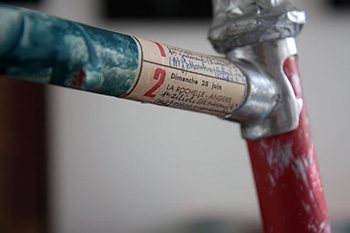
straffon works in layers, layers that consist of imagery, text, pen, resin and canvas. it is an agglomeration that eminently suits his iconography, but has he ever felt the desire to work more conventionally', using such as paint on canvas, or is that simply not his metier? "Art should never be confined by convention. I'll say no more."
i am extremely fortunate in receiving many review items of clothing and more recently, footwear from the folks at perren street, many items of which arrive at washingmachinepost cottage before they have been released to the public. this is a state of affairs that applied to even the recently released grand tour shoes, yet prior to that delivery, i had already been entreated to views of james straffon's artistic treatment of the very same shoes. from where did the rapha connection arrive? "Courtesy of Docteur Juppet, and the archangel Raphael. It's a great form of introduction."
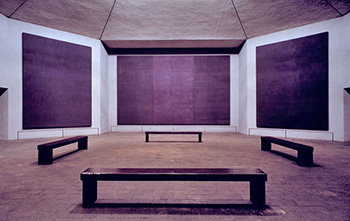
the 'le tour' exhibition has been, to the best of my knowledge, extended by one week, and offers any interested viewer the opportunity to purchase a limited edition book cataloguing the works displayed upon the snap gallery's walls. the image of bradley shows that the artist has his eye on immediacy, if perhaps only infrequently. so where does james straffon go from here?
"Next year is the 100th Tour de France. So the stage has been set. I'm already fighting with ideas, for which I am keen on a departure into perhaps more abstract works. My ideal would be a homage to the Rothko Chapel, in Houston, Texas. I'd love the opportunity to fuse the eclecticism of the Madonna del Ghisallo Chapel, with the simplicity of the Rothko Chapel, and arrive at a setting of contemplation, and worship, for those who value elevation through tales of human fortitude and frailty.
"All I need is a location, and a sympathetic sponsor."
friday 27th july 2012
 ..........................................................................................................................................................................................................
..........................................................................................................................................................................................................